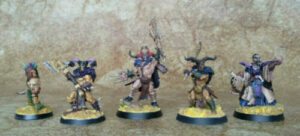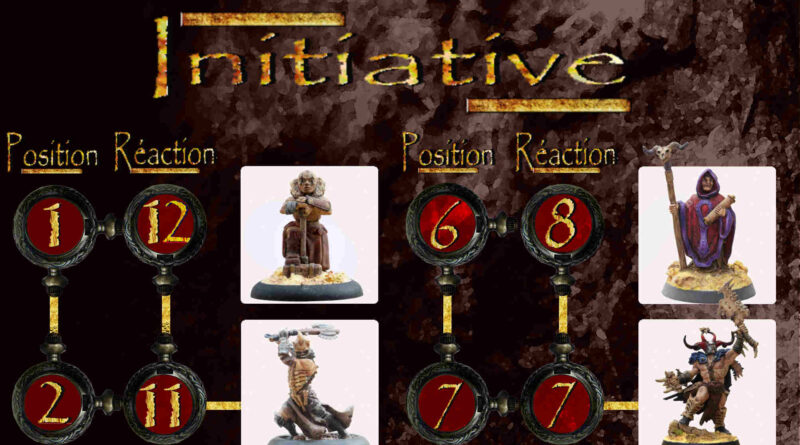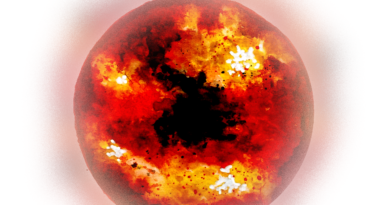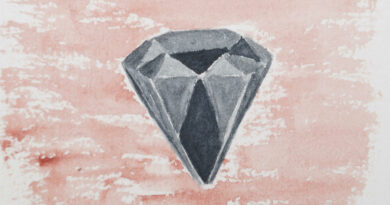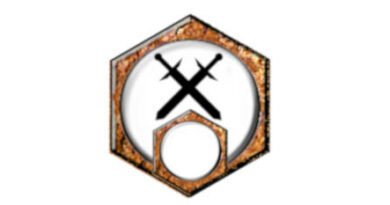Reaction.
Reaction – Réaction.
On alert.
During his game turn, a character can spend 1 AP to place himself on alert and end his game turn. He can now try to react according to the actions of his opponents.
When an opponent declares an action, an alert character can make an Aptitude check ![]() and react by pausing the opponent’s turn. It is therefore a complementary action that takes place during the game turn of an opposing fighter, even if the character has already performed his actions during his initiative.
and react by pausing the opponent’s turn. It is therefore a complementary action that takes place during the game turn of an opposing fighter, even if the character has already performed his actions during his initiative.
To attempt to reaction, a fighter must :
- Have performed the action on alert during its activation or have maintained its state on alert during a new game turn,
- Pass an aptitude test
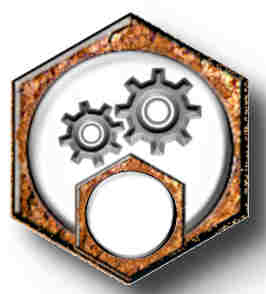 whose difficulty depends on the opponent’s initiative. (determined on the initiative grid)
whose difficulty depends on the opponent’s initiative. (determined on the initiative grid) - A character cannot react on a fighter acting behind his back.
Determination of difficulty of the reaction test.
The initiative track indicates the score to reach during the aptitude test according to the placement of the opponent.
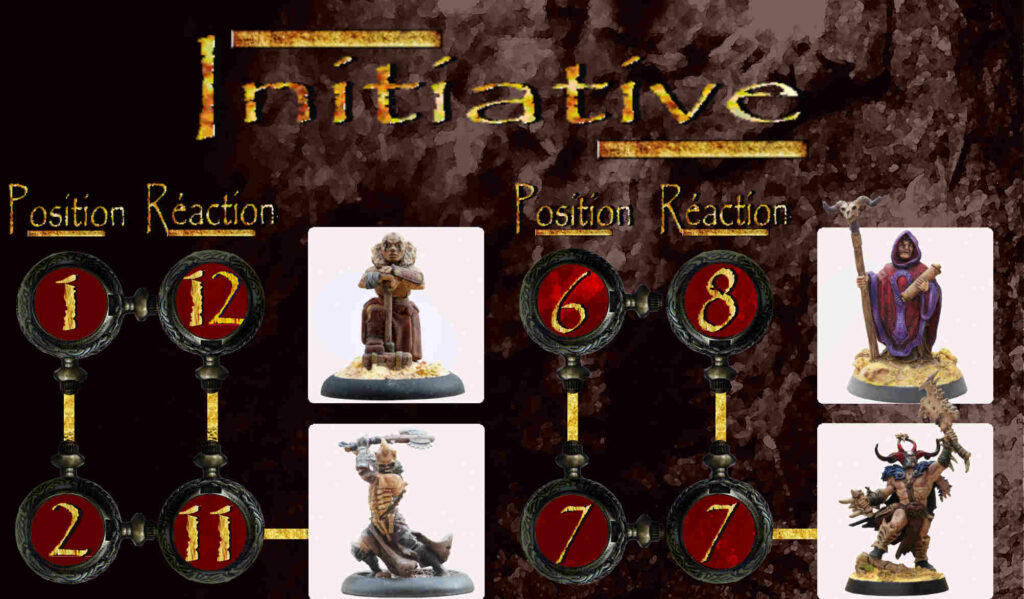
Example : Gammeg (in position No. 6) wishes to attempt a reaction when Moera charges him with her hammer. He must perform an aptitude test against a difficulty of 12 because Moëra has the advantage of being first on the initiative track.
Inversely, if Moëra wants to attempt a reaction during Gammeg’s turn, she must perform her test against a difficulty of 8.
Failure and success.
In case of failure, the character does not react and loses its alert state.
If successful, the opponent completes the announced action and waits for the result of the reaction before continuing his turn.
The reacting character can perform one action among :
- Activate an element of the game,
- Fighting an engaged opponent,
- Movement or disengagement if engaged,
- Repair, sabotage,
- Shoot, if not engaged
- Use his equipment if he is not engaged.
The reacting player does not have to act directly on the fighter who triggered the reaction. If, while moving away from an attack of which he was the target, he is no longer within range of the announced attack, the adversary loses his attack.
Reaction and action point.
At the end of his reaction, the character can spend a new action token in order to maintain his state on alert.
There is no limit to the number of reactions per character turn. (limited only by his AP) but a character can only attempt one reaction during an opponent’s turn.
If several characters of the same team can react against an opponent, the order in which they react is chosen by the player controlling them.
If several characters from different teams can react against an opponent, the fastest character on the initiative track begins its reaction.
Once the reactions have been resolved, the fighter whose turn it is continues his actions if he has any left. He can continue his movement but loses the current action if he is knocked down.
At the start of the turn, a character can choose to maintain its alert state by spending 1 AP.

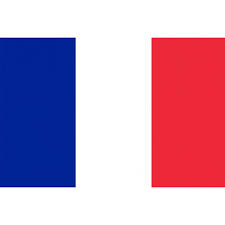
En alerte.
Durant son tour de jeu, un personnage peut dépenser 1 PA pour se placer en alerte et mettre fin à son tour de jeu. Il peut désormais tenter de réagir en fonction des actions de ses adversaires.
Lorsqu’un adversaire déclare une action, un personnage en alerte peut effectuer un test d’aptitude ![]() et réagir en mettant en pause le tour de l’adversaire.
et réagir en mettant en pause le tour de l’adversaire.
Il s’agit donc d’une action complémentaire qui a lieu pendant le tour de jeu d’un combattant adverse et ce, même si le personnage a déjà fait ses actions lors de son initiative.
Pour tenter de réagir, un combattant doit :
- Avoir effectuer l’action en alerte durant son activation ou avoir maintenu son état en alerte lors d’un nouveau tour de jeu,
- réussir un test d’aptitude
 dont la difficulté dépend de l’initiative de l’adversaire. (déterminé sur la grille d’initiative)
dont la difficulté dépend de l’initiative de l’adversaire. (déterminé sur la grille d’initiative) - Un personnage ne peut pas réagir sur un combattant agissant dans son dos.
Déterminer la difficulté du test de réaction.
La piste d’initiative indique le score à atteindre lors du test d’aptitude en fonction du placement de l’adversaire.

Exemple : Gammeg (en position N° 6) souhaite tenter une réaction lorsque Moera le charge avec son marteau. Il doit effectuer un test d’aptitude contre une difficulté de 12 car Moëra a l’avantage d’être première sur la piste d’initiative.
Inversement, Si Moëra veut tenter une réaction lors du tour de Gammeg, elle doit effectuer son test contre une difficulté de 8.
Echec et réussite.
En cas d’échec, le personnage ne réagit pas et perd son état en alerte.
En cas de réussite, l’adversaire termine l’action annoncée et attend le résultat de la réaction avant de continuer son tour.
Le personnage qui réagit peut effectuer une action au choix :
- Activer un élément du jeu,
- Combattre un adversaire engagé,
- Mouvement ou désengagement s’il est engagé,
- Réparer, saboter,
- Tirer, s’il n’est pas engagé
- Utiliser son équipement s’il n’est pas engagé.
Le joueur qui réagit n’est pas obligé d’agir directement sur le combattant qui a déclenché la réaction.
Si, en s’éloignant d’une attaque dont il était la cible, il n’est plus à portée de l’attaque annoncée, l’adversaire perd son attaque.
Réaction et Point d’action.
A la fin de sa réaction, le personnage peut dépenser un nouveau jeton d’action afin de maintenir son état en alerte.
Il n’y a pas de limite au nombre de réaction par tour d’un personnage. (limité uniquement par ses PA) mais un personnage ne peut tenter qu’une seule réaction pendant le tour d’un adversaire.
Si plusieurs personnages d’une même équipe peuvent réagir face à un adversaire, l’ordre dans lequel ils réagissent est choisi par le joueur qui les contrôle.
Si plusieurs personnages d’équipes différentes peuvent réagir face à un adversaire, c’est le personnage le plus rapide sur la piste d’initiative qui commence sa réaction.
Une fois les réactions résolues, le combattant dont c’est le tour continue ses actions s’il lui en reste. Il peut poursuivre son déplacement mais perd l’action en cours s’il est jeté au sol.
En début de tour, un personnage peut choisir de maintenir son état en alerte en dépensant 1 PA.
